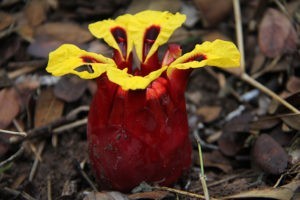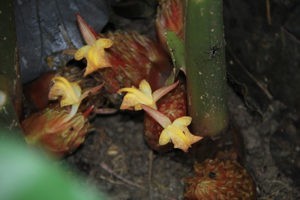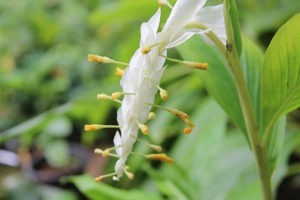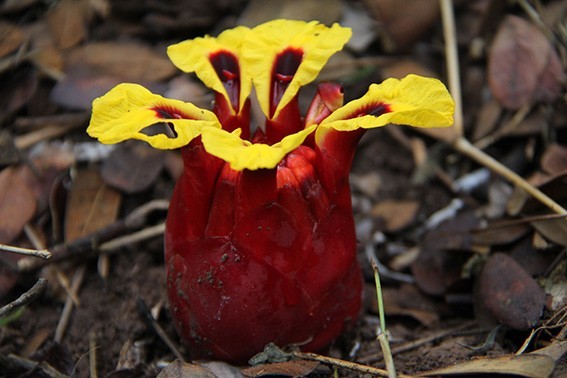Last week I was lucky enough to be representing Pha Tad Ke in Singapore at the 8th International Zingiberales Symposium. An important aspect of my role as botanist is to stay up-to-date on what is happening in the world of botany and remain connected to colleagues and researchers around the world. This symposium happens every three years and is an important event in the calendar of anyone who works with ginger plants or plants in related families (like the bananas).
“Zingiberales” is the name given to the order containing eight related families of plants – the Zingiberaceae (the ginger family), Musaceae (bananas), Costaceae (spiral gingers), Cannaceae (Cannas), Marantaceae (prayer plants), Heliconiaceae (Heliconias), Strelitziaceae (bird of paradise plants) and the Lowiaceae (Orchidantha family). This is a very diverse group in south east Asia, and forms an important part of many of the forests of Laos.

Flowers of Etlingera yunnanensis, a member of the Zingiberaceae family.
PTK has a collection of more than 100 different species in this order (some from every family), and many of these are on display in our ginger garden for everyone to enjoy. Some of the more rare and difficult to grow plants are kept in our nurseries where they can be more closely watched by our staff and studied by researchers. Because of the importance of this group of plants in Laos and in PTK’s work I had the opportunity to attend the Zingiberales Symposium and talk about our collection.
The ability of botanists to do genetic analysis has changed our understanding of the relationships between species, genera and families in the ginger order. There have recently been big reorganisations of the families, and the research that resulted in these changes was presented at the symposium. Now that I have this new information under my belt I can apply it to our work and collection here at PTK, as well as make sure that our ginger collection staff are up-to-date as well.

Zingiber ligulatum in flower last week at PTK.
Being able to spend a week learning about the recent scientific work being done in this plant group from the researchers themselves is invaluable, but so is the opportunity to connect with them as botanical colleagues. As many emails and Skype calls as we might have, nothing beats getting together to discuss work and collaborations in person. New relationships are started and ideas are sparked. It is these new and renewed connections that are really the most valuable part of any symposium or conference, as researchers from any discipline will tell you!

The flowers of a species of Globba (not fully identified yet) starting to open.
These networks and relationships are what allow PTK to function as a scientific institution, not just a nice tropical pleasure garden. The projects that may come from this meeting will assist in pushing forward our understanding of gingers and related families in Laos, and allow us to continue to work towards protection and conservation. The 9th International Zingiberales Symposium will be in 3 years, and hopefully Pha Tad Ke can join once again, and present some new and exciting work on these plants. After all, there is so much work still to be done here, and the amazing gingers are as good a place to start as any!
PTK would like to extend a big thank you to the Tian Jiew Hoe Fellowship for assisting with the costs of attending the 8th International Zingiberales Symposium. We would not have been able to go without you.
Text by Bryony Smart, PTK Botanist and photographs by Veo Dalavong, PTK Database Manager.



